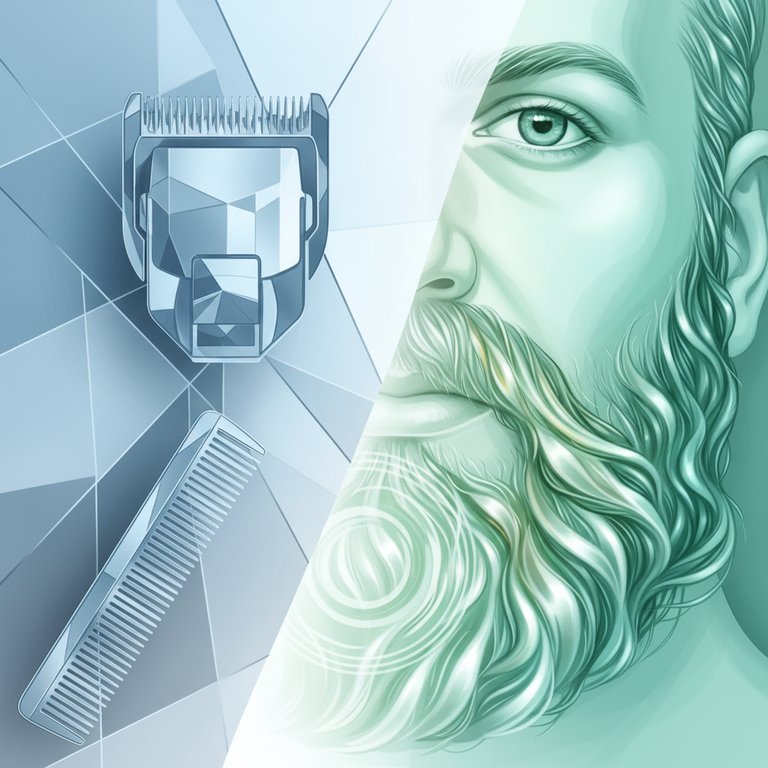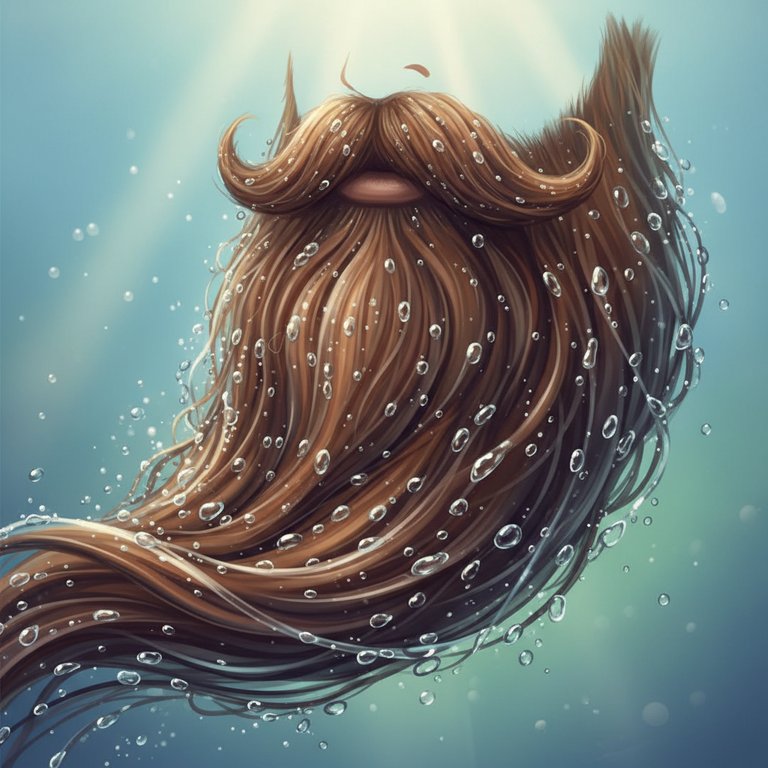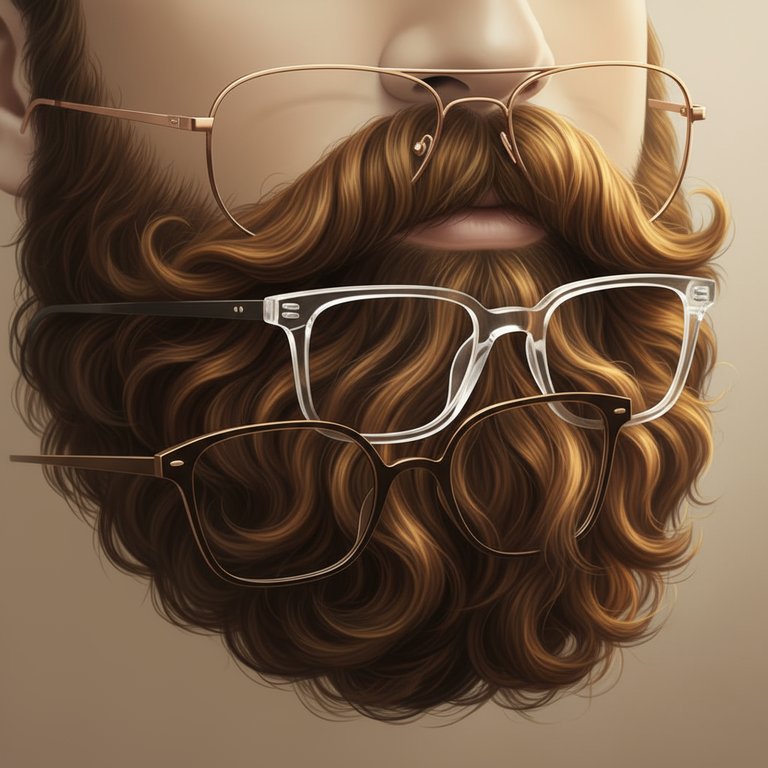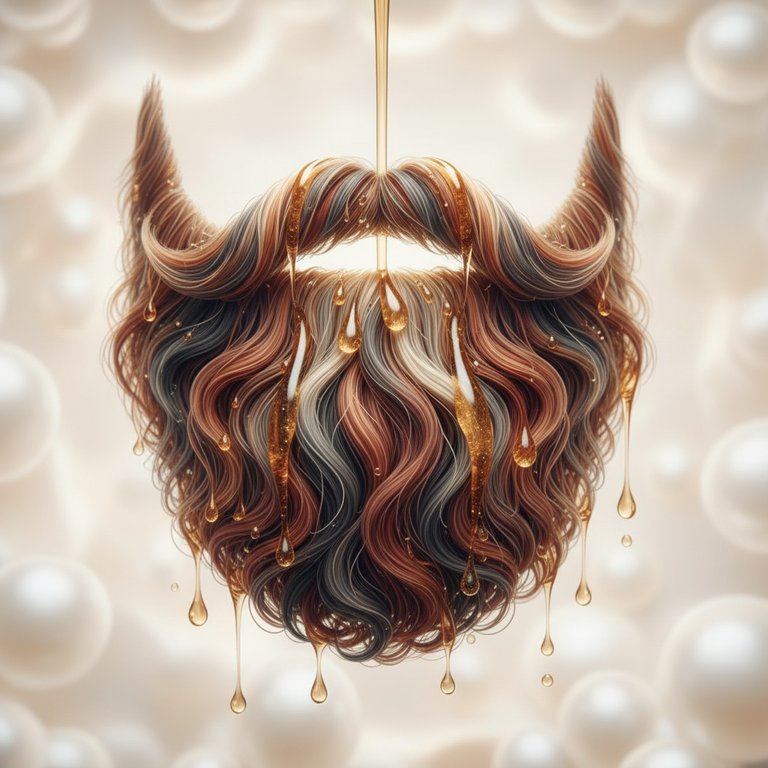Ever stood in front of the mirror, clippers in hand, wondering if your beard should be soaking wet or bone dry before you make that first snip? Trust me, you're not alone. It's a classic beard grooming dilemma, and one that sparks a surprising amount of debate among us beard enthusiasts. This isn't just a random thought; it's a fundamental question that can seriously impact the outcome of your trim.
Getting your beard trim just right is an art, and knowing whether to go wet or dry is a crucial part of mastering that art. Do you want razor-sharp precision or a smooth, effortless glide? The choice you make can mean the difference between a perfectly sculpted masterpiece and a slightly lopsided, 'oops, I cut too much' moment. So, grab your favorite beverage, settle in, and let's dive deep into the great wet vs. dry beard trimming debate. We’re going to explore the pros, the cons, and ultimately, help you decide which method is best for your magnificent mane.
The Great Debate: Wet vs. Dry
At its core, the argument for trimming a beard wet or dry boils down to one key factor: hair behavior. When hair is wet, it becomes softer, more pliable, and typically appears longer as the water weighs it down. When it's dry, it's in its natural state – its true length, texture, and how it naturally sits are all on full display.
Think of it like cutting a spring. If you cut it while it's stretched out, it'll spring back much shorter than you anticipated. Beard hair isn't quite a spring, but the concept of shrinkage is very real. This fundamental difference is what drives the two main schools of thought in beard trimming. Let's break down each approach.
Team Dry Trim: Precision is Key
For many, including myself for most routine trims, dry trimming is the undisputed champion. Why? Because it offers unparalleled accuracy and control.
- What You See Is What You Get: When your beard is dry, you're seeing its true length and how it naturally falls. There are no surprises when the water evaporates. This means you can trim with confidence, knowing exactly how much you're taking off.
- Better for Detailing and Shaping: Dry hair stands up more, making it easier to spot stray hairs, define crisp lines, and achieve intricate shapes. Clippers glide smoothly through dry hair, and scissors can snip individual hairs with precision.
- Less Risk of Over-Trimming: This is a big one! Because wet hair appears longer, it's incredibly easy to cut off too much without realizing it until your beard dries and shrinks. With dry trimming, that risk is significantly reduced.
- Ideal for Shorter Beards and Touch-Ups: If you're maintaining a shorter beard or just doing a quick tidy-up, dry trimming is almost always the way to go for consistent results.
When you're aiming for a specific length, a clean fade, or sharp cheek and necklines, dry trimming gives you the best chance of nailing it perfectly the first time.
Team Wet Trim: The Smooth Operator
While dry trimming has its advantages, wet trimming isn't without its merits, especially in certain situations. It's less about precision and more about the feel of the cut.
- Smoother Glide: Wet hair is softer and less resistant, allowing clippers or scissors to glide through with less tugging. This can feel more comfortable, especially if you're dealing with a very thick or coarse beard.
- Good for Bulk Removal: If you're going for a significant beard transformation – taking off several inches of growth – wet trimming can make the initial bulk removal faster and easier on your tools. The hair is more compressed when wet, which can simplify the process of cutting through a dense area.
- Less Static: Dry hair can sometimes build up static, causing hairs to fly around. Wet hair eliminates this issue, making cleanup slightly easier.
However, the biggest caveat with wet trimming, as we've discussed, is the shrinkage factor. What looks like a perfect length when wet can become surprisingly short once dry. This makes it less ideal for precision work or if you're trying to maintain a very specific length.
My Two Cents: Why I Lean Towards Dry (Mostly!)
I've been there, trust me. That moment of dread when your perfectly wet-trimmed beard dries, and suddenly you look like you've lost a fight with a lawnmower. It's a rite of passage for many beard growers, but one you can largely avoid!
For the vast majority of my beard trimming, I'm firmly in the dry camp. My go-to rule of thumb is this: if you're shaping, defining lines, or maintaining a specific length, always trim dry. The accuracy is simply unmatched. You can see every hair, every line, and every potential mistake before it happens.
The only time I might consider a wet trim is if I'm chopping off a really significant amount of length – say, going from a long Gandalf to a short corporate style. Even then, I'd do the initial bulk removal wet, then let it dry completely and finish with a meticulous dry trim for all the shaping and detailing. It's all about minimizing the surprises!
How to Trim Your Beard Like a Pro (The Dry Method)
Since dry trimming is generally the preferred method for precision and predictable results, let's walk through how to do it right.
Step 1: Start with a Clean, Dry Canvas
Wash your beard with a good beard wash and conditioner. Rinse thoroughly, then towel dry. For best results, use a blow dryer on a cool setting, brushing your beard downwards as you dry to ensure every hair is completely dry and flowing naturally. Make sure there's no beard oil or balm in it yet.
Step 2: Brush it Out
Using a quality beard brush or comb, thoroughly brush your beard downwards and outwards to detangle any knots and ensure all hairs are lying in their natural direction. This helps you see its true shape and identify any areas that need attention.
Step 3: Choose Your Weapon (and Guard)
Have your clean, sharp beard clippers with various guards ready, and a pair of sharp beard scissors. If you're using clippers, always start with a longer guard than you think you need. You can always go shorter, but you can't put hair back!
Step 4: Define the Outline (Neckline & Cheekline)
- Neckline: Find your Adam's apple. Place two fingers horizontally above it – that's roughly where your neckline should start. Use your clippers (without a guard, or with a very short one) to create a clean line, fading down towards your chest or shaving completely below it.
- Cheekline: Follow your natural cheekline. If you want a crisper look, you can slightly lower it, but generally, less is more here. Use clippers or scissors to remove stray hairs above this line.
Step 5: Trim the Body
Attach your chosen guard to your clippers. Start trimming from the bottom of your beard, moving upwards against the grain for bulk removal, then switch to trimming downwards with the grain for blending. Work slowly and methodically, checking for symmetry as you go. Focus on blending the sides into the front and ensuring an even length.
Step 6: The Mustache Matters
Comb your mustache hairs straight down over your lip. Using your beard scissors, carefully trim along your lip line. Be extra careful here!
Step 7: Final Touches & Blending
Step back from the mirror. Look at your beard from different angles. Use your beard comb and scissors to snip any stray hairs that the clippers missed, or to fine-tune any uneven spots. This is where the magic of blending happens – ensure smooth transitions between different lengths, especially where your beard meets your sideburns.
Step 8: Aftercare
Once you're satisfied, wash your face and beard to remove any loose hairs. Pat dry, then apply a nourishing beard oil or balm to hydrate your beard and the skin beneath, and style as desired.
Extra Tips for a Sharp Trim
- Good Lighting is Your Best Friend: Always trim in a well-lit area, preferably with natural light, to spot every hair.
- Invest in Quality Tools: Sharp scissors and reliable clippers make a world of difference. Dull tools tug and pull, leading to an uneven and uncomfortable trim.
- Patience, My Friend: Don't rush. Take your time, especially if you're new to trimming.
- Less is More (Initially): You can always take more off, but you can't put it back. Start with a longer guard and work your way down.
- Comb Often: Throughout the trimming process, comb your beard frequently to ensure hairs are lying correctly and to check for evenness.
- Know Your Face Shape: Understand how your beard shape compliments your face. A skilled trim can enhance your facial features.
- Regular Maintenance: Consistent, light trims are better than letting it grow wild and then doing a drastic cut.
Your Beard Trimming Questions Answered! (FAQ)
Q1: How often should I trim my beard?
A: The frequency of your beard trim really depends on your desired style, how fast your hair grows, and how meticulous you want to be. For a tidy, shorter beard, a light trim or touch-up every week or two might be necessary. Longer beards might only need a significant trim every 3-4 weeks to maintain shape and remove split ends, with daily brushing and oiling in between. Listen to your beard – when it starts looking unruly or losing its shape, it’s time for a trim!
Q2: What happens if I trim my beard when it's wet and it shrinks?
A: When you trim a wet beard, the water weighs down the hair, making it appear longer than it actually is. Once your beard dries, the hair will spring back to its natural, shorter length. This often leads to accidentally cutting off more hair than you intended, resulting in a beard that's much shorter or more uneven than you wanted. It's the primary reason many beard enthusiasts prefer dry trimming for precision!
Q3: Can I use regular hair clippers on my beard?
A: While you technically *can* use regular hair clippers, dedicated beard trimmers are generally a better choice. Beard trimmers are designed for finer, more precise work on facial hair, often having smaller blades and more adjustable guard settings. If you only have hair clippers, ensure they are clean, sharp, and you use appropriate guards, but be aware that they might not offer the same level of detail as a specialized beard trimmer.
Q4: How do I get an even trim if my beard grows unevenly?
A: Achieving an even trim with uneven growth requires patience and a good strategy. Start by brushing your beard thoroughly to see its natural flow. Always begin with a longer clipper guard than you think you need, especially in areas of denser growth. Work slowly, trimming in small sections and consistently checking for symmetry. Use beard scissors for any stubborn stray hairs or to carefully blend areas where growth is thinner or thicker. Regular, gentle brushing can also help train your beard hairs to lie in a more uniform direction over time.
Q5: Should I use beard oil before or after trimming?
A: You should apply beard oil *after* trimming. For the actual trimming process, your beard should be clean and completely dry to ensure accuracy and to prevent cutting off too much hair. Once you've finished trimming, washed away any loose hairs, and patted your beard dry, then it's the perfect time to apply beard oil. It will hydrate the newly cut ends, moisturize the skin beneath, and help your beard look its best.
Q6: Is it okay to trim my beard with just scissors?
A: Absolutely! Trimming with just scissors is a fantastic way to maintain a beard, especially for longer styles or for precise detail work. Scissors give you incredible control over individual hairs and are excellent for shaping, removing split ends, and blending. Many beard enthusiasts and barbers use a combination of clippers for bulk removal and scissors for the finishing touches. Just make sure your scissors are sharp and specifically designed for beard or hair trimming.
Conclusion
So, should you trim your beard wet or dry? For most situations, especially when you're aiming for precision, shaping, and avoiding those dreaded 'oops' moments, dry trimming is your best bet. It gives you the most accurate representation of your beard's true length and how it will look once you step out the door.
However, wet trimming still has its place for initial bulk removal if you're going for a dramatic change. Ultimately, the best method is the one that gives you the results you're happiest with. Don't be afraid to experiment a little (starting cautiously, of course!), and find what works for your unique beard and routine.
Remember, your beard is a journey, and every trim is a step in that adventure. Keep it clean, keep it conditioned, and keep it looking sharp! Happy trimming, my friend!
Disclaimer: This blog post provides general grooming advice for informational purposes only and is not a substitute for professional guidance. Always use grooming tools safely and according to manufacturer instructions.



